One night Seminole Canyon State Park; in Big Bend National Park two nights Cottonwood Campground, one night backpack to NE4, two nights Paint Gap 4
- Seminole Canyon State Park: Camping 10/15/22
- Big Bend National Park
- Camping: Cottonwood Campground BBNP 10/16/22–10/17/22
- Backpack East Rim 4: 10/18/22
- Camping: Paint Gap 4 10/19/22–10/21/22 | Flickr album
One characteristic of aging is that you can get great pleasure from revisiting experiences of your youth. Separated by decades, you forget the details of such experiences but recall that you enjoyed them immensely. In my case this holds true not only for books but also for my outdoor experiences. Going back decades later over trails previously trodden can be as full of joy and discovery as it had been the first time.
With this in mind I wanted to do an overnight to the South Rim, including the East Rim (which I don’t believe I’d been on before). I took advantage of online camping reservation systems and I booked a trip for October 15–21, starting with Seminole Canyon State Park and ending with three days at Paint Gap 4, probably my favorite primitive site in Big Bend National Park. In between was an overnight to ER4 (East Rim #4), a backcountry site on the Rim in the Chisos Mountains. My last backpack in the Chisos had been, I think, 1999. My last trip to the South Rim had been a day hike with friends in January of 2009, and I don’t know that I’d ever been to the east rim side as it’s seasonally closed for the Peregrine Falcon. (My first South Rim hike had been as a nine-year-old with my family in 1968.)
One reason I’ve started staying in Seminole Canyon SP on my Big Bend trips is they let you have campfires there. The abnormally warm weather rendered that issue moot; I camped there–it splits the drive from Austin to BBNP into two short drives–and I intended to do the Sunday morning guided tour into the canyon. I was at site #9, one of my preferred ones. A group set up next to me and had a bit of music and lights, but not too intrusive and they shut it down by 9:00 p.m. In the morning by the time I broke down my camp and got packed there really wasn’t enough time to do the tour so I just headed out to BBNP in a light drizzle.
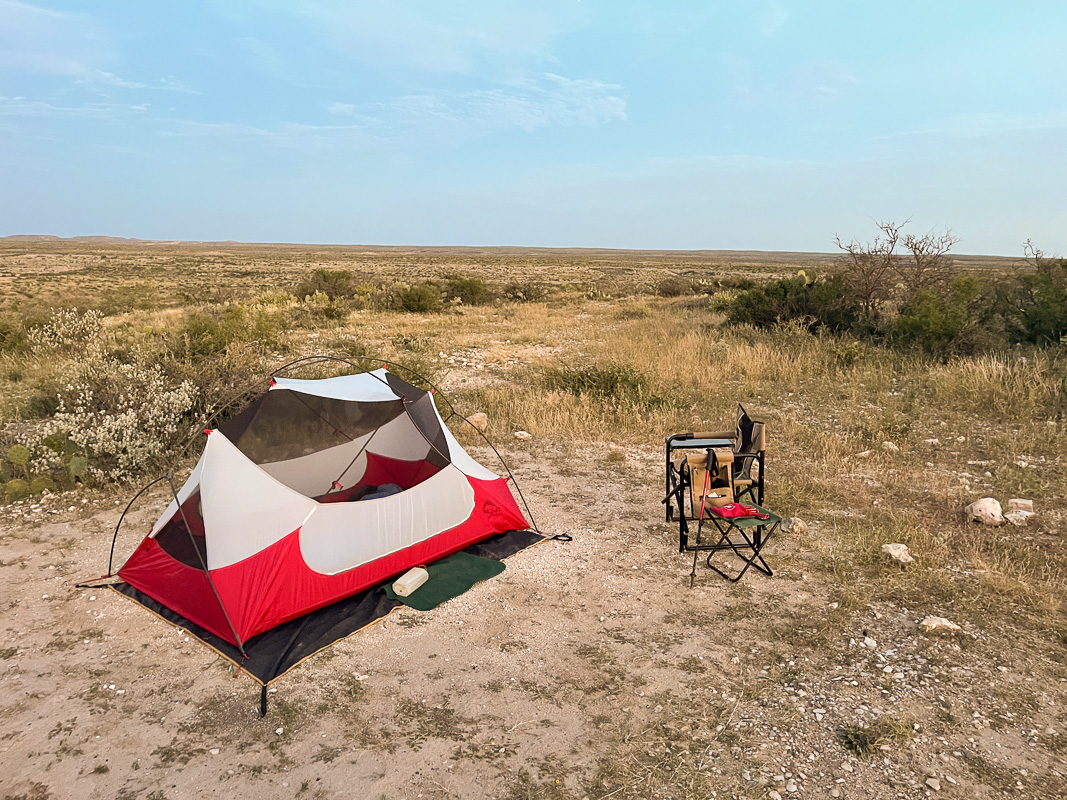
I arrived at Cottonwood Campground early afternoon of the 16th. I had stayed in Cottonwood many years before; in April of 1986 I’d been there during a trip to see Halley’s Comet, with my friend Charley Gutierrez. Unfortunately, on this trip I discovered most of the cottonwoods in the campground had died, apparently from the droughts of the previous ten years.
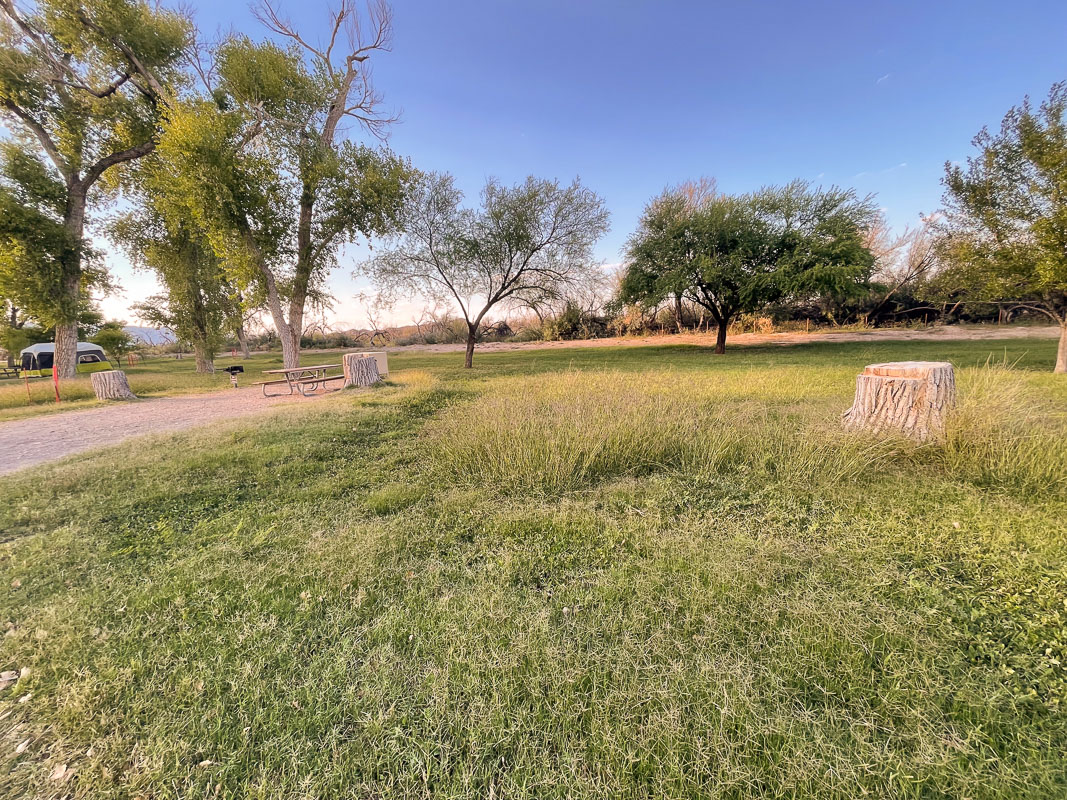
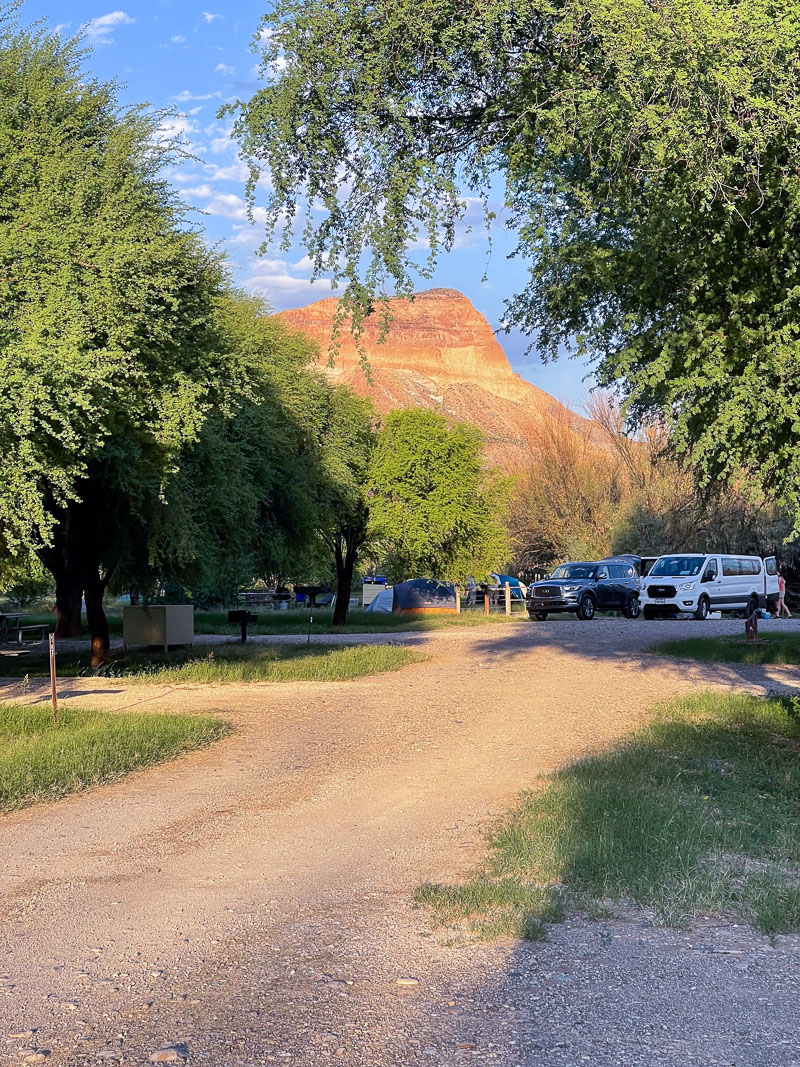

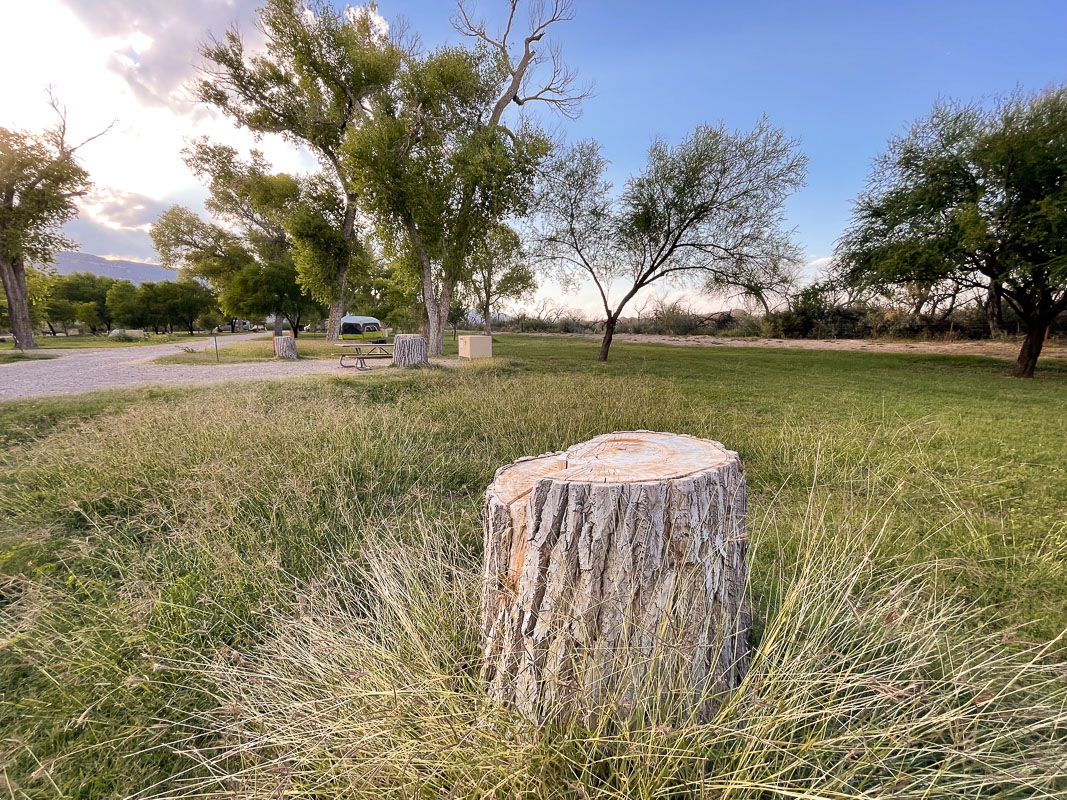
The weather continued to be uncomfortably humid. (I would use my rechargeable fan in my tent at night.) Signs of recent heavy rains were everywhere–the park much greener than usual, high growth in the campground made picking a tent site a challenge (I settled on site #13), and on a trip out to Santa Elena canyon the road was covered with dried mud. Nobody was at the Santa Elena parking area except for the man emptying the garbage cans; I only stayed long enough to hike out to the river for a quick peek.
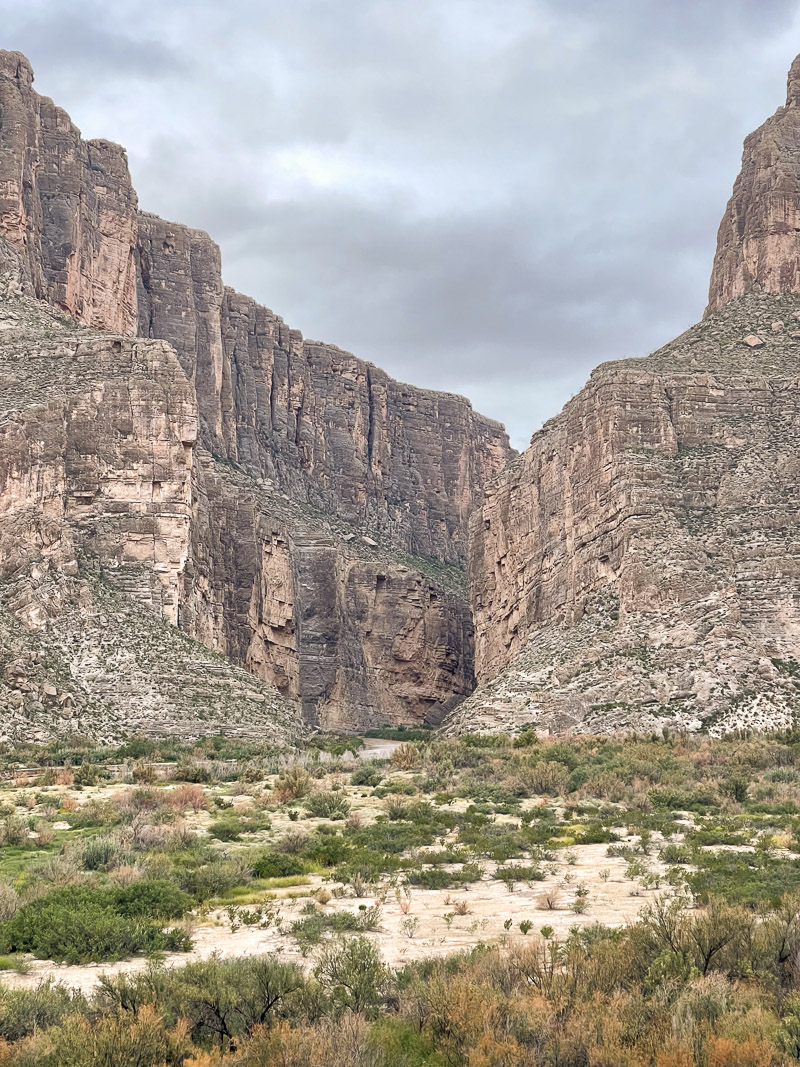
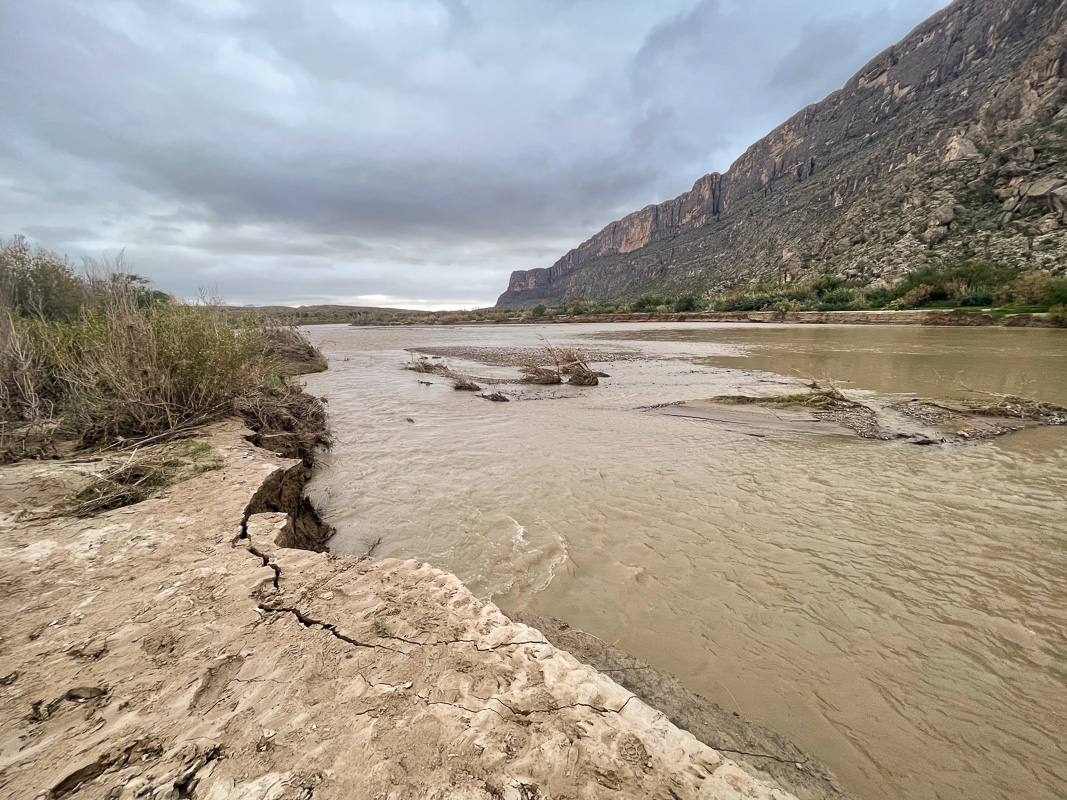
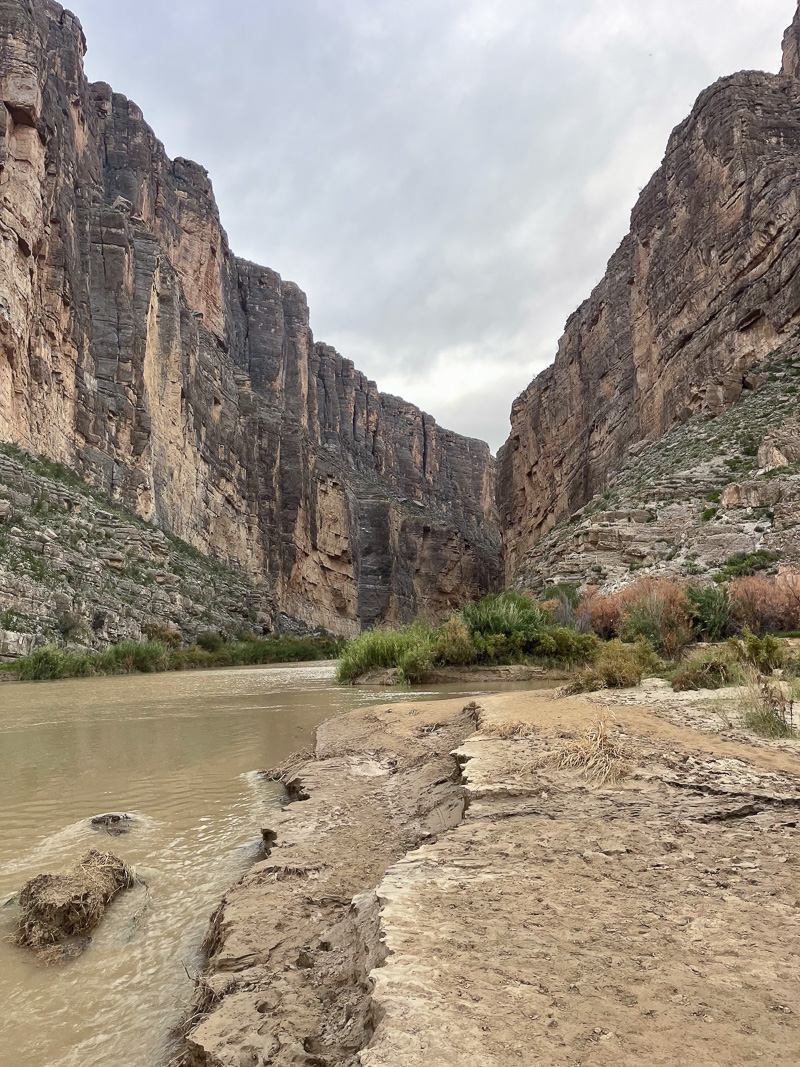
I spent my day-and-a-half at Cottonwood packing my backpack, exploring and trying to reconcile what I saw with what I recalled from 1986. Mostly I noticed the loss of the mighty cottonwood trees. My impression from forty years ago had been it was a tree-shaded meadow (actually old farm I believe) but now it was largely exposed to the sun, and less inviting. Several huge stumps confirmed my memory.
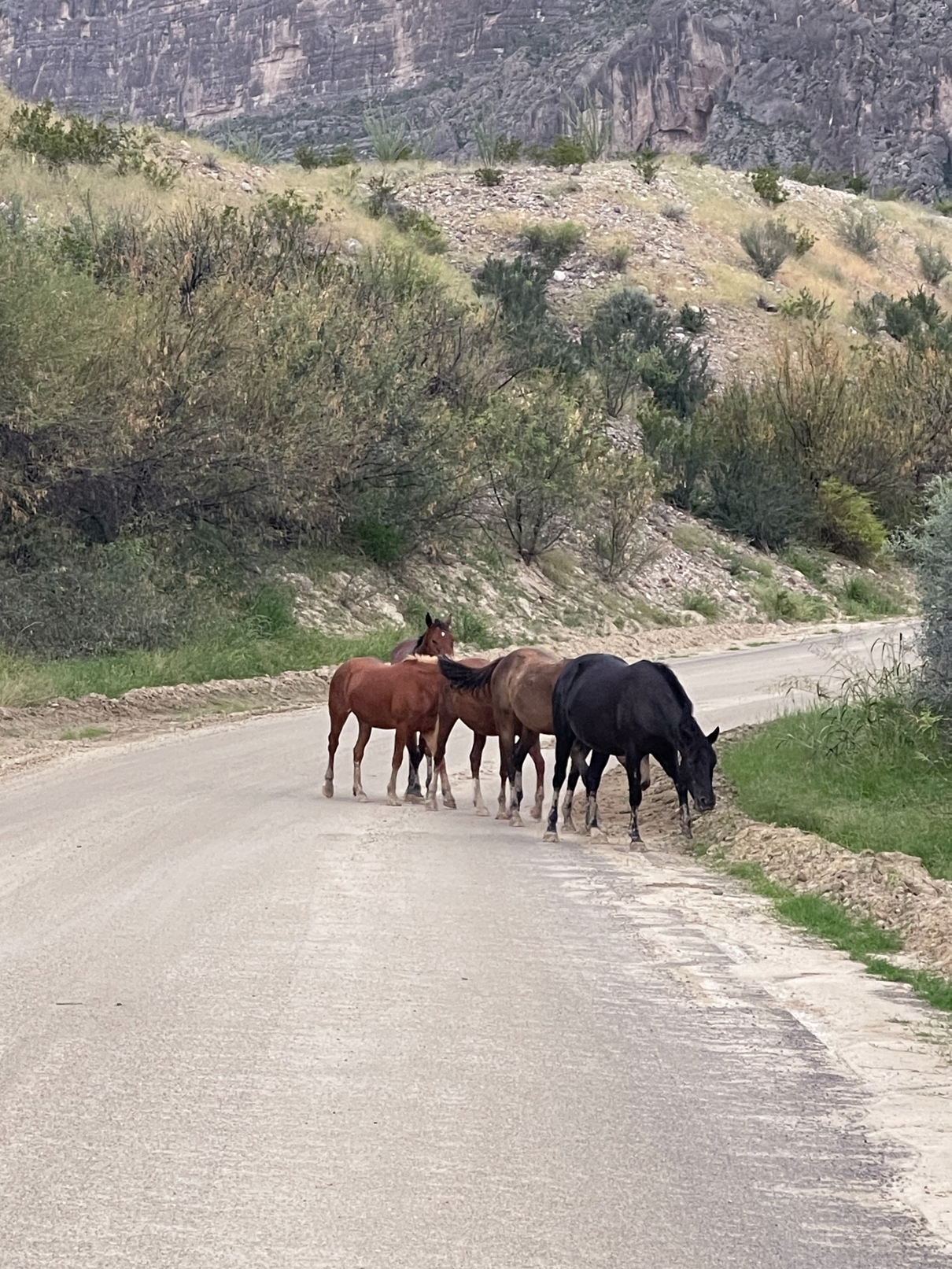
There was a forlorn amphitheater, where ranger talks used to be held, obviously unused for many years.

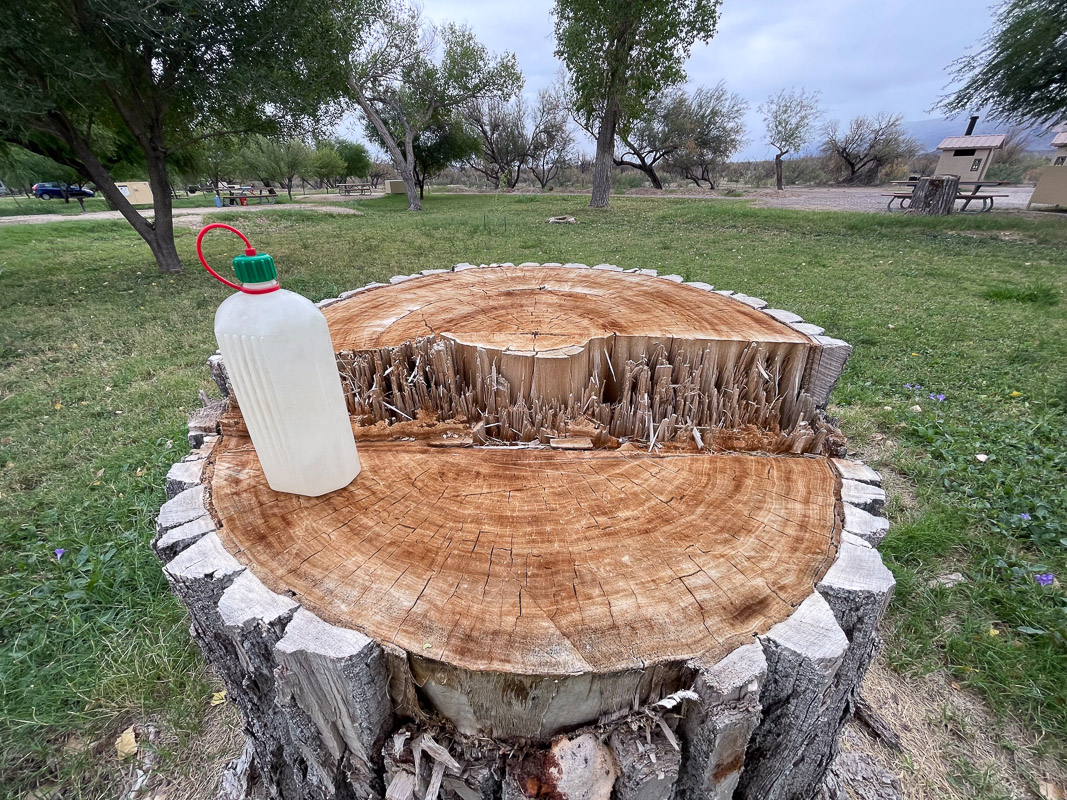


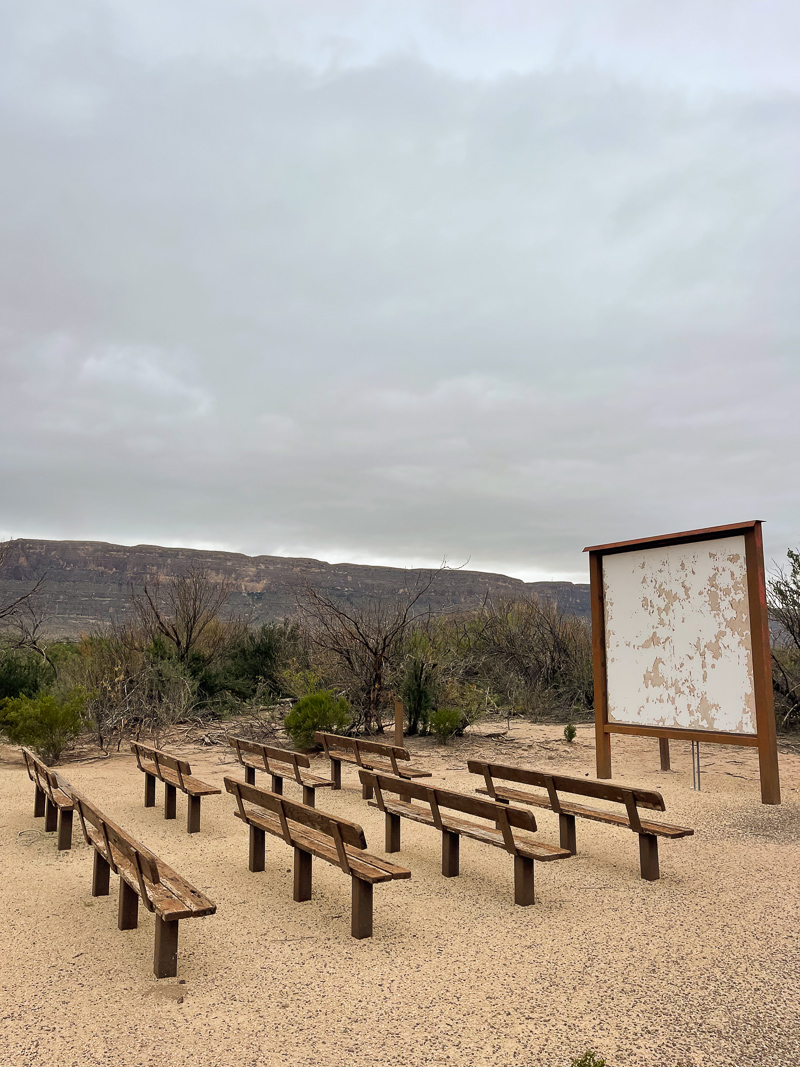
There were maybe only a half-dozen or so sites occupied, nights were dark and pleasant (save for the humidity) except for the group campground; full, and noisy, and with multiple high-lumen lanterns for some reason. At times I could hear the Rio Grande swirling away a hundred yards from me.
Very early Tuesday morning the front I had been anticipating finally moved through. It started raining. I got up very early. I had already packed up not only my backpack but almost my entire camp the night before, so except for the annoying rain breaking camp was pretty quick. Because it was wet I tossed my tent loosely in the back of the truck (I wouldn’t be taking it on my backpack.)
I pulled out of the campground in the rainy dark and wound my way up on Ross Maxwell Drive. As I approached the Chisos and the dawn broke I could see…nothing. The mountains were shrouded in clouds. “OK,” I thought, “so this is how it’s going to be.”
The trailhead parking area was mostly empty; I put on what I thought would be suitable for backpacking up to the Rim in the rain along with an ample supply of water (yes, I was pretty sure Boot Spring would have water but it’s what I do these days) and headed up at 8:21 Tuesday morning.

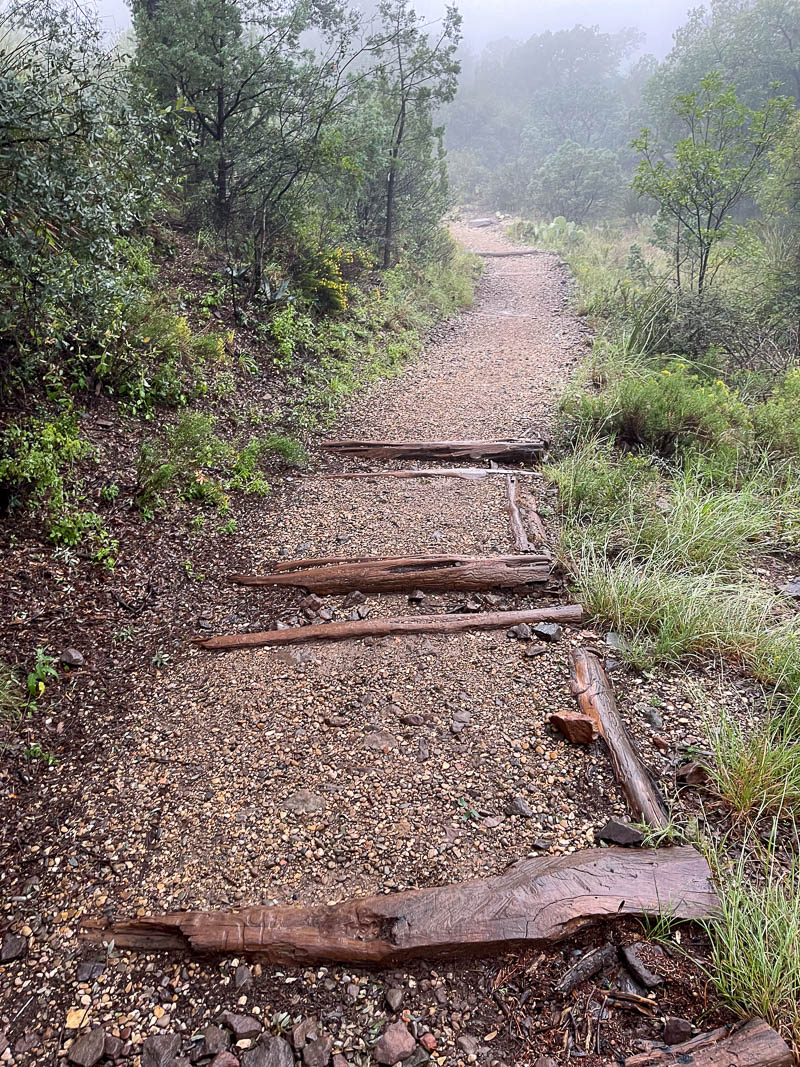
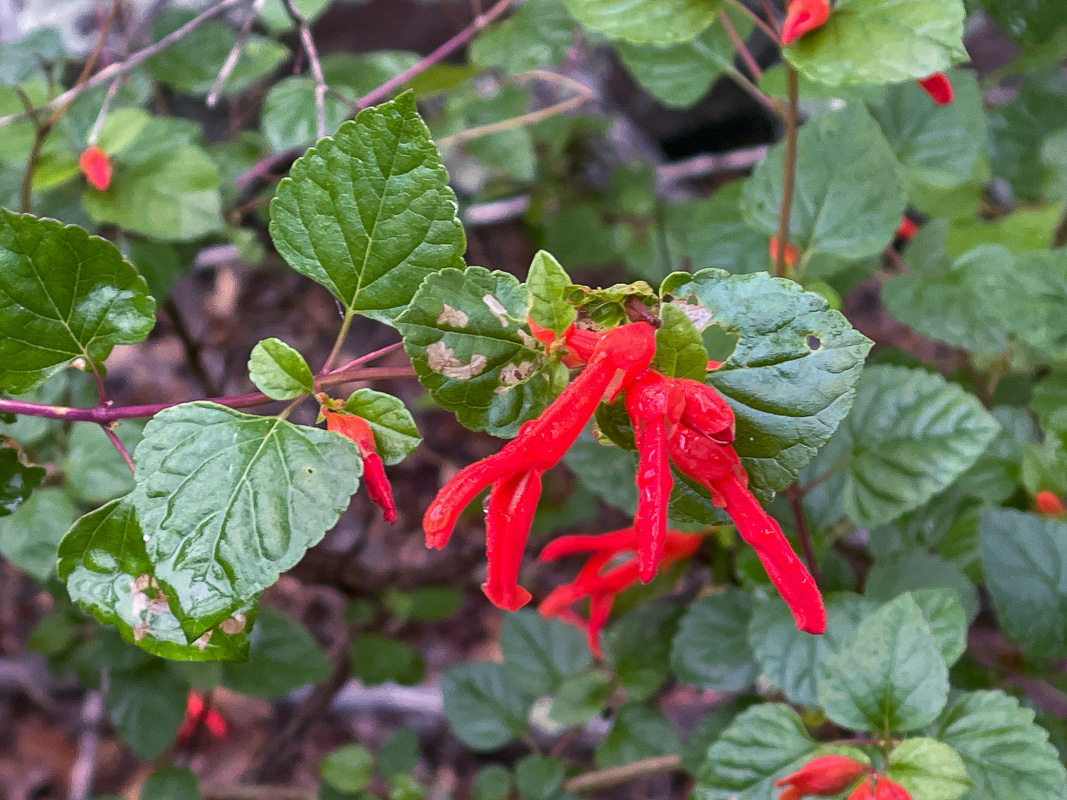

I’d hoped the clouds/fog would lift at some point but they never did. At least the rain wasn’t much of an issue. I don’t recall anything heavier than drizzle or light showers. I took the less-steep Laguna Meadows path up and made it to the Colima trail junction around Noon. With the fog, I hadn’t spent much time enjoying the views and pretty much marched straight along. The Colima trail was new to me and I found it very interesting and beautiful and perfect for an overcast day. (I’m considering staying in one of those sites some day.) The fact that it is downhill from there to Boot Spring may have contributed to my enjoyment of that stretch.
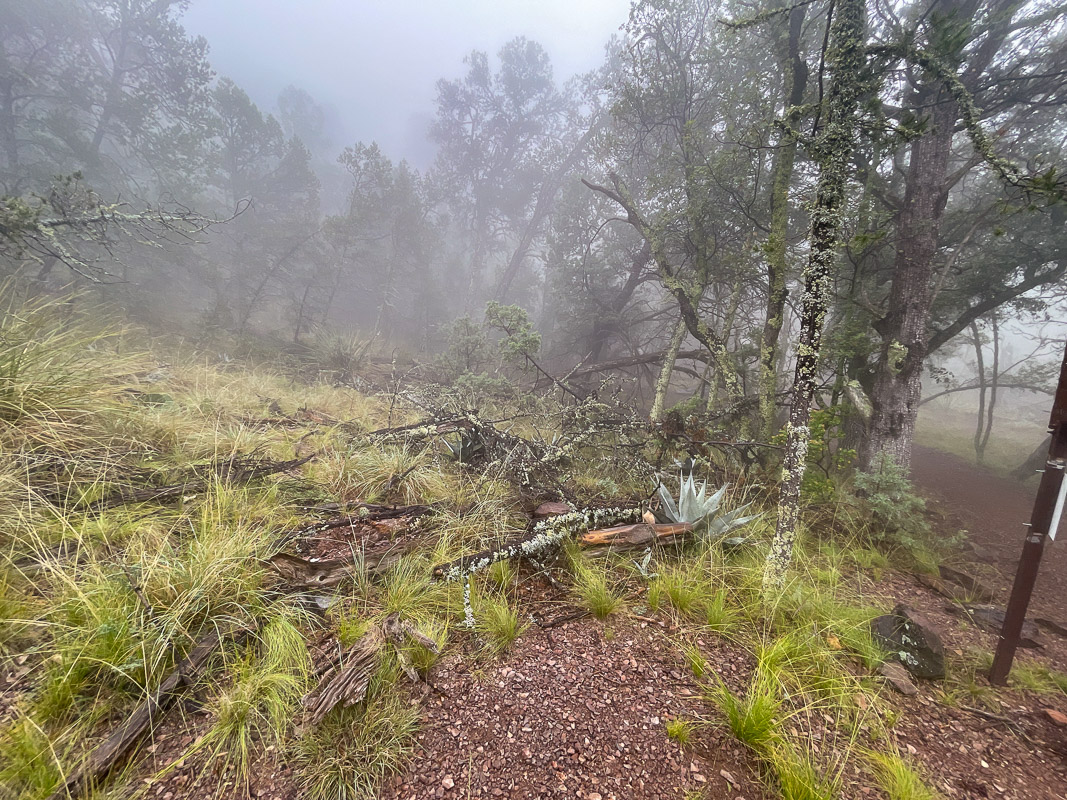
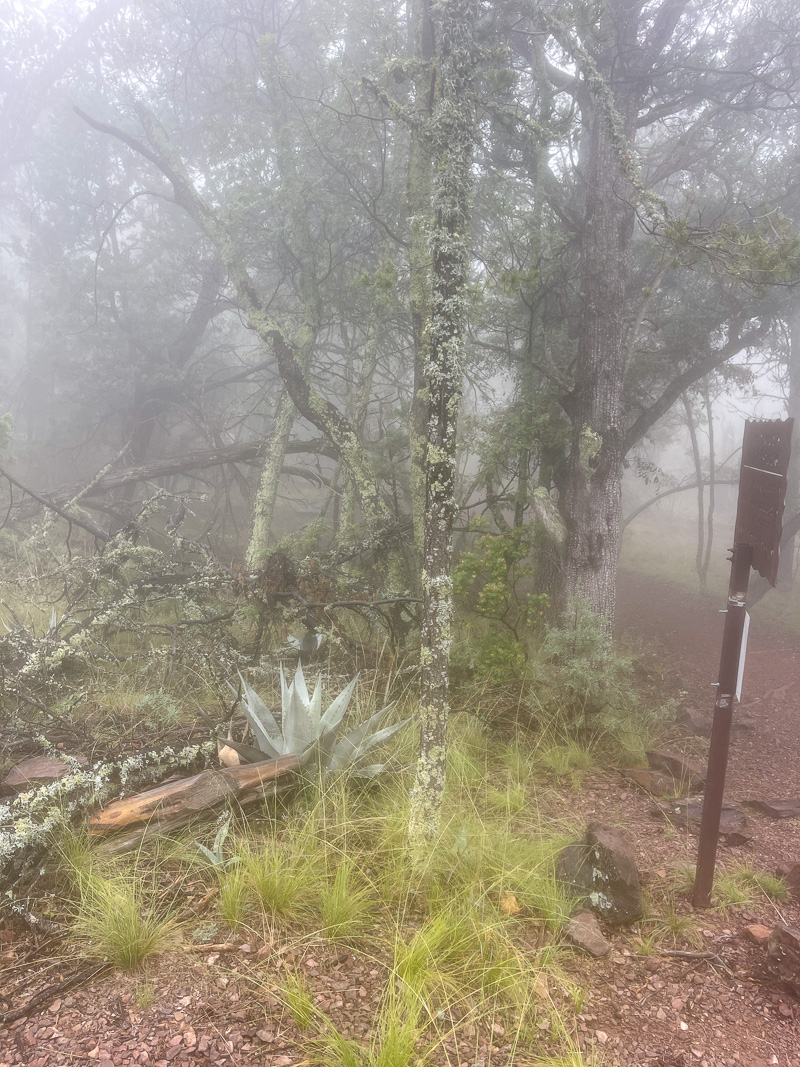
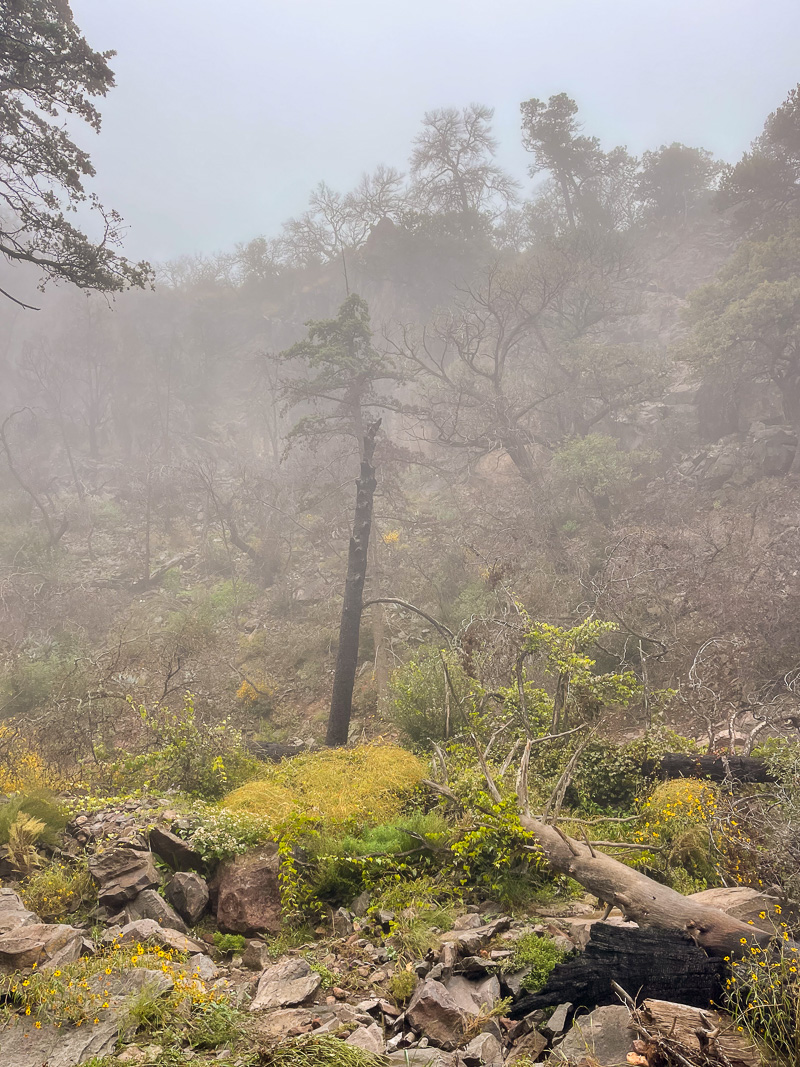
At Boot Spring I could hear the spring bubbling but didn’t pause as I had plenty of water, and I headed on up and then after about a half-mile took a left turn to hit the East Rim trail. This was all terra incognita to me, but alas, still socked in by fog and clouds I just kept my head down, enjoying the wildflowers when I could. Also due to the recent rains not only were the grasses high, they were wet and the hung over the lower parts of the trail so I was soon soaking wet.
Finally I spied the sign pointing to ER 4; it seemed a very long way from that point, through a maze of overgrown grasses and use trails, to the bear boxes and another sign indicating arrival at ER 4. I was a bit confused by the two bear boxes at ER4; it wasn’t a group site, and I wasn’t sure what the intent was. It was much too foggy to get the lay of the land, although I saw another likely spot about 100′ away. Anyway, I set myself up by the boxes and sign.
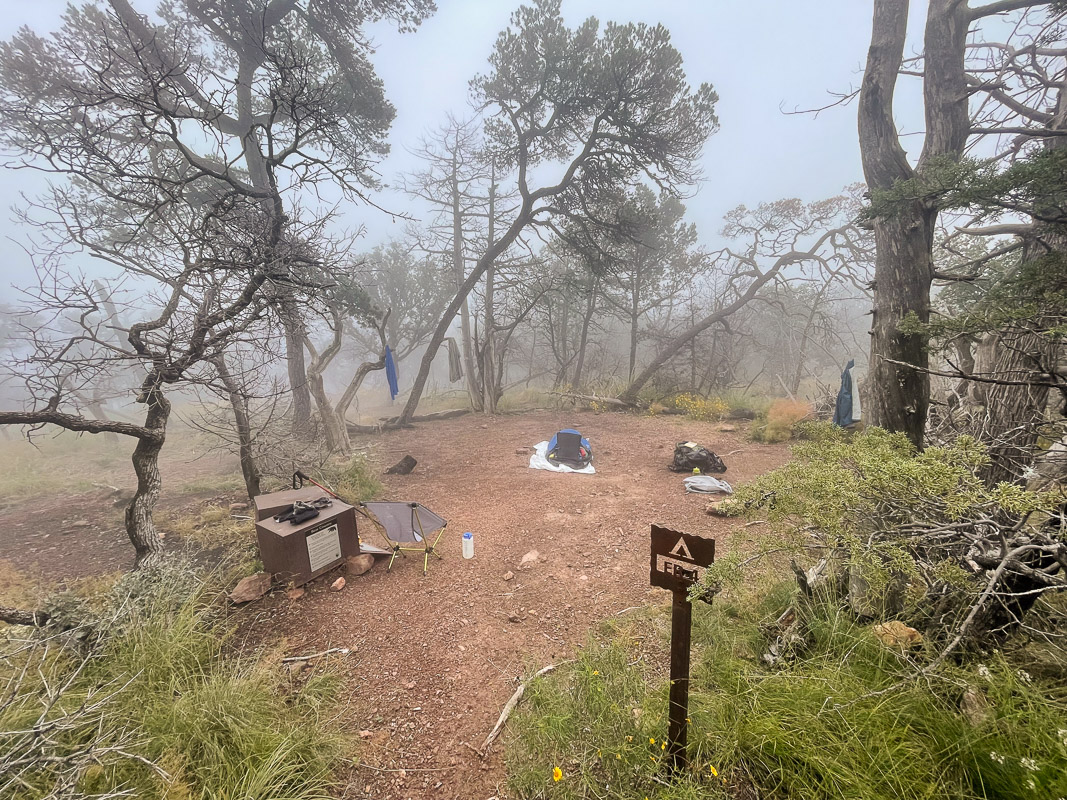

I explored what I could, but the poor visibility precluded any sightseeing beyond about ten yards. This was disappointing since one of the attractions to me of this site was to be the views from either side of the fairly narrow shelf the terrain makes there. Oh well, maybe it’ll clear up later.
A couple of hours later a young couple showed up and also showed some confusion: What are you doing in our spot/what are you doing in mine? They seemed skeptical and I showed them my permit. Oh well–they took that other spot I’d noted.
The weather didn’t improve, and a couple of light showers followed. There was little to explore so I went about setting up my camp and making supper. Everything I had been wearing was soaked. I took off my rain jacket, shirt, and capilene top and hung them up to dry. I put my Quasar down top on directly over my skin. By bedtime, none of the clothes had dried a bit. I put some of them in my sleeping bag hoping my body heat might help them dry. This was my first time to take the Tyvek ground sheet and first with the new OR Helium bivy. It (the Tyvek) is still a bit noisy and may be hard to put down in a wind. But it is slippery; I camped on a slight slope to elevate my head and I kept slipping down almost all the way off the tyvek.
I went to bed and fell asleep pretty early, woke up once before midnight, saw stars and I think Jupiter or Saturn off to the northeast and thought ‘cool, clouds are breaking’, and went back to sleep. It got foggy and drizzly again and even sprinkled a few times, enough for me to pull the bivy over my head—but not actually zipping it.
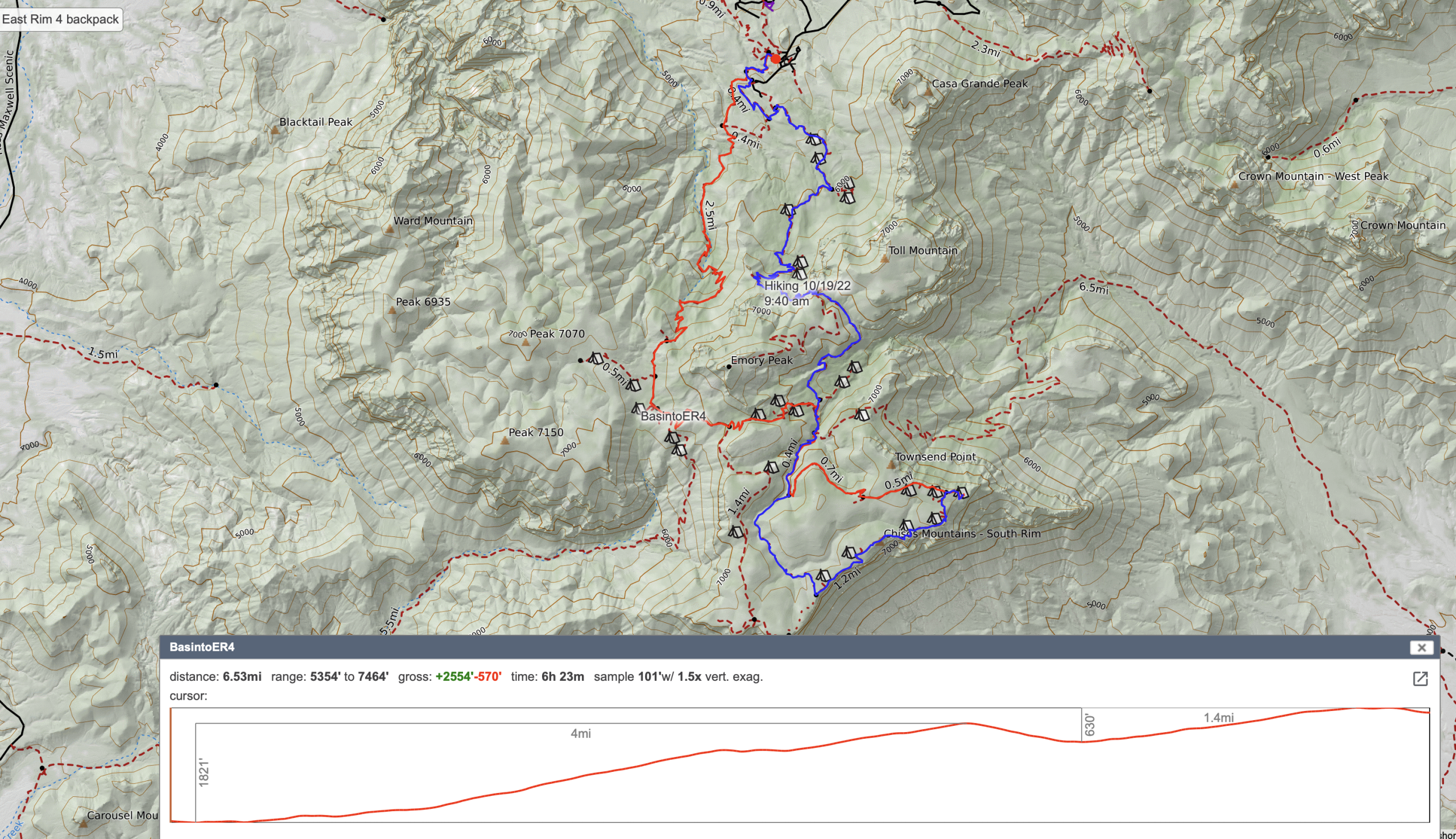
I awoke in the morning very pleased to find the fog/clouds had indeed lifted. I saw spectacular views to the East already, and glimpses to the northwest. But I didn’t have time to dawdle and I set off for the South Rim trail junction. I had spectacular views right up to the lip of the rim all along the hike. Better than the South Rim, I think. I wore rain bottoms over my hiking pants as I anticipated more wet trail overgrowth which proved to be a bit overwarm. The trail was overgrown, but the grass was mostly dry. I noted the recent fire damaged area mostly near the East/South rim trail junction. I made the trail junction, headed down, and finally started seeing people just this side of Boot Spring. The creek through there was full of water, much of it running. (I got lost once!) My inReach satellite messenger ran out of juice on the way down (my fault) and I don’t know exactly how long the return trip down the Pinnacles trail was but there was nothing out of the ordinary for the rest to the return trip.
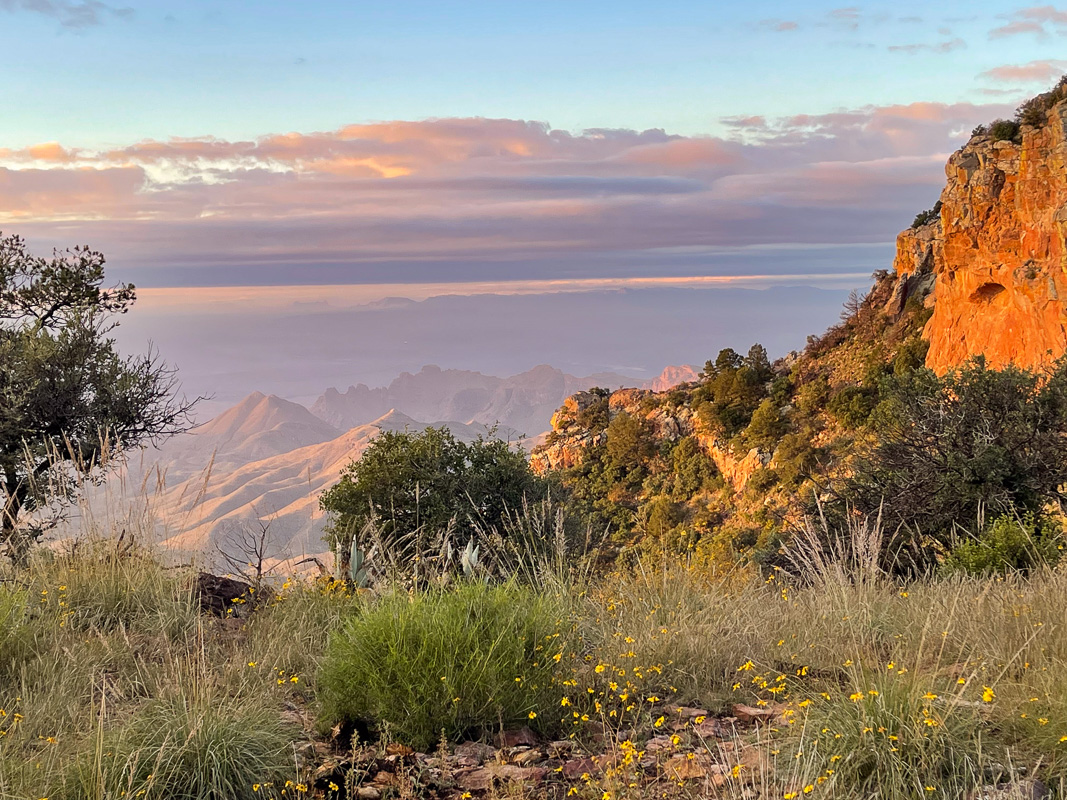
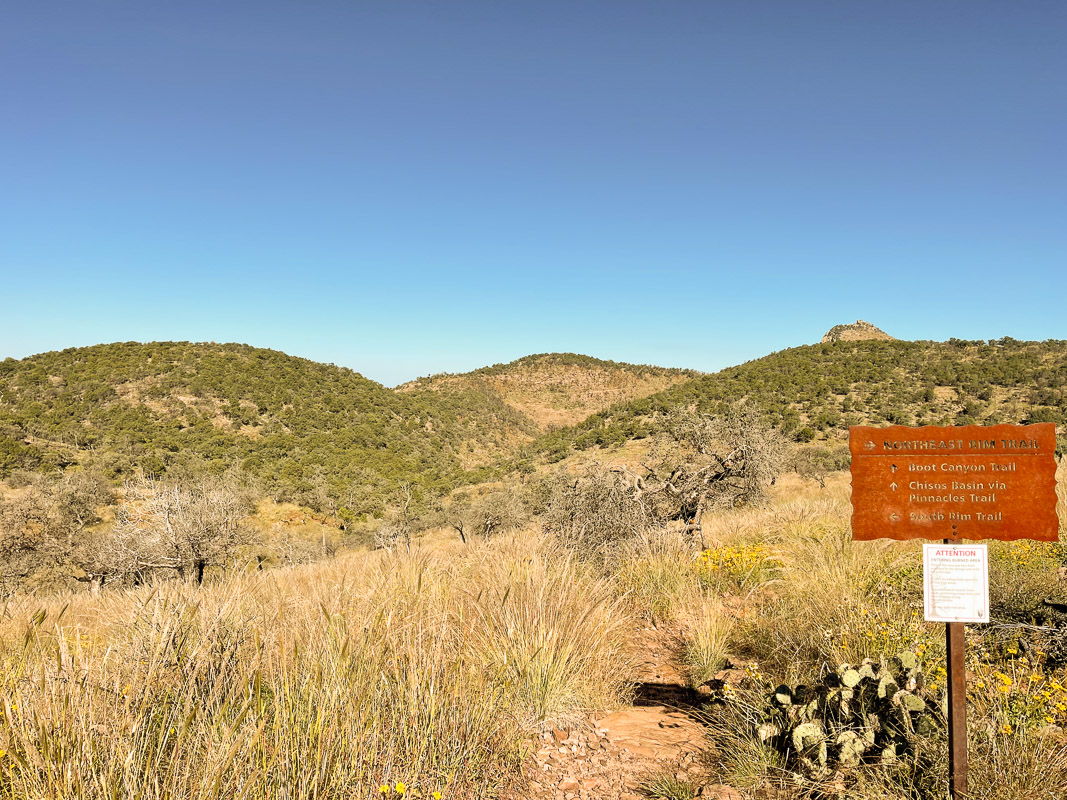

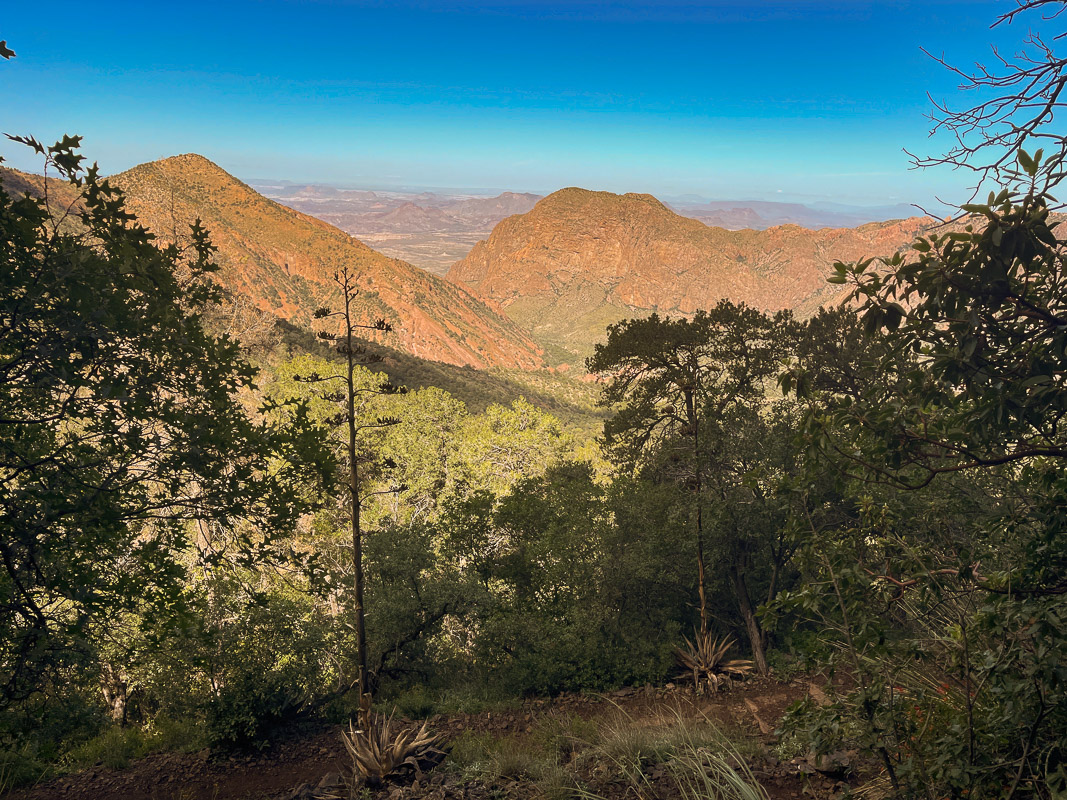
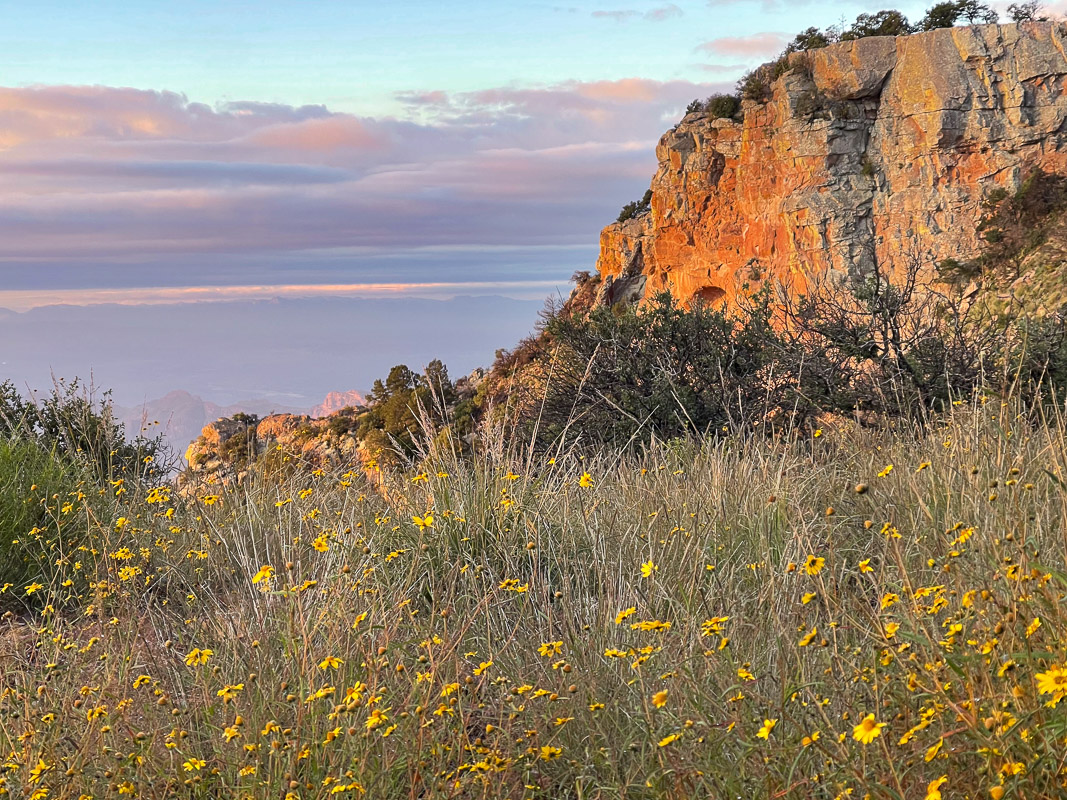
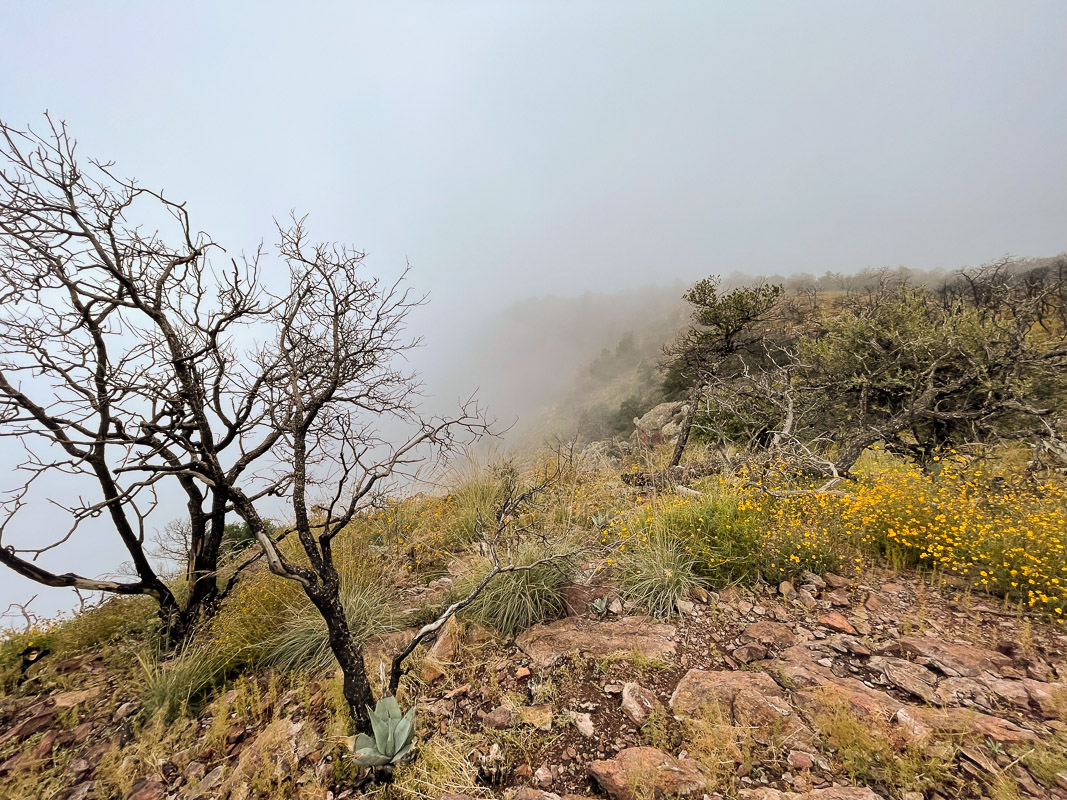
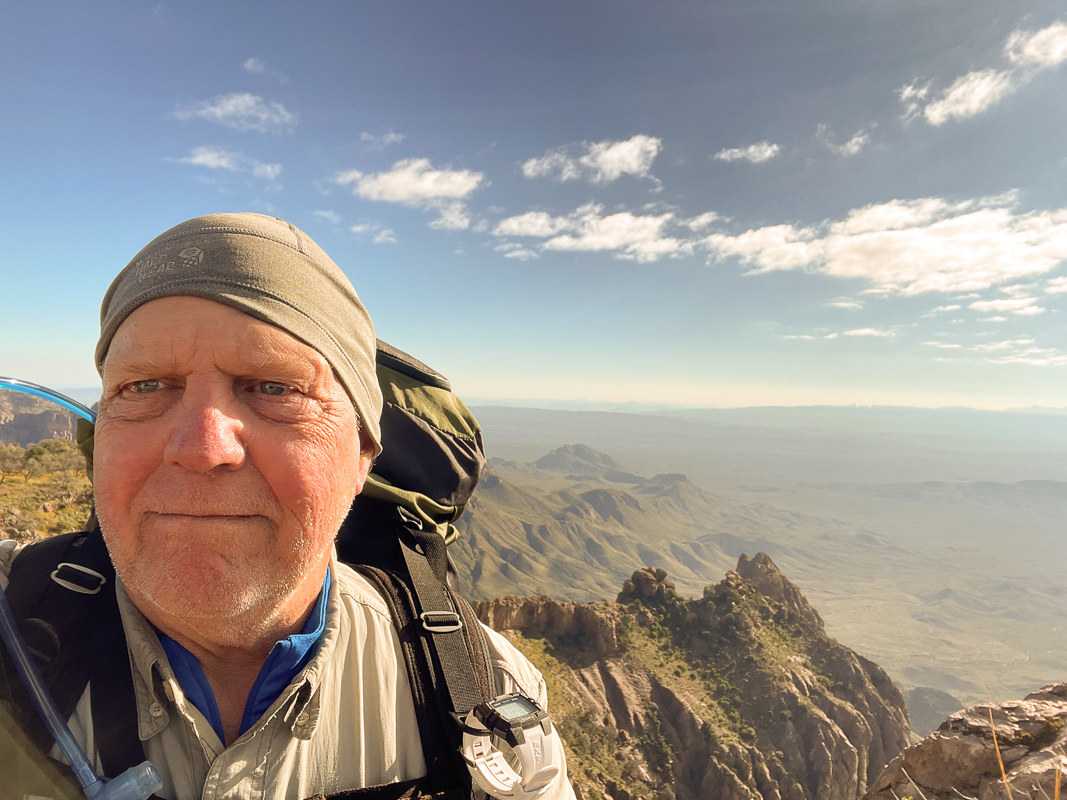
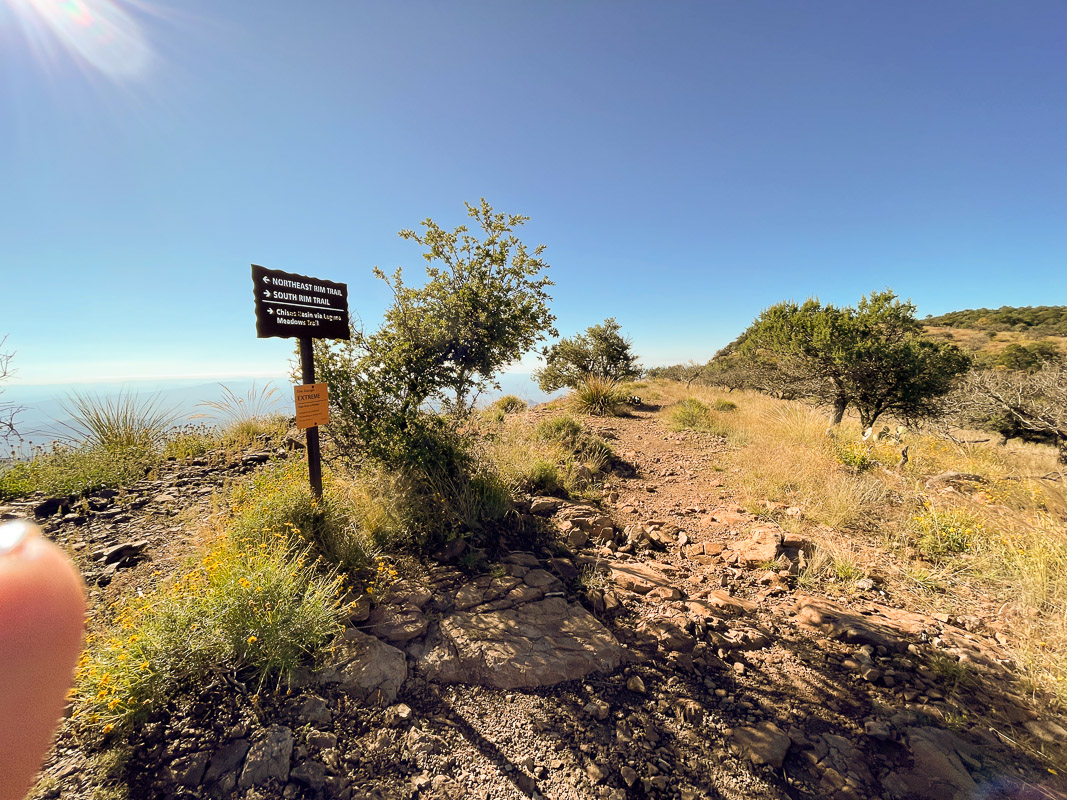
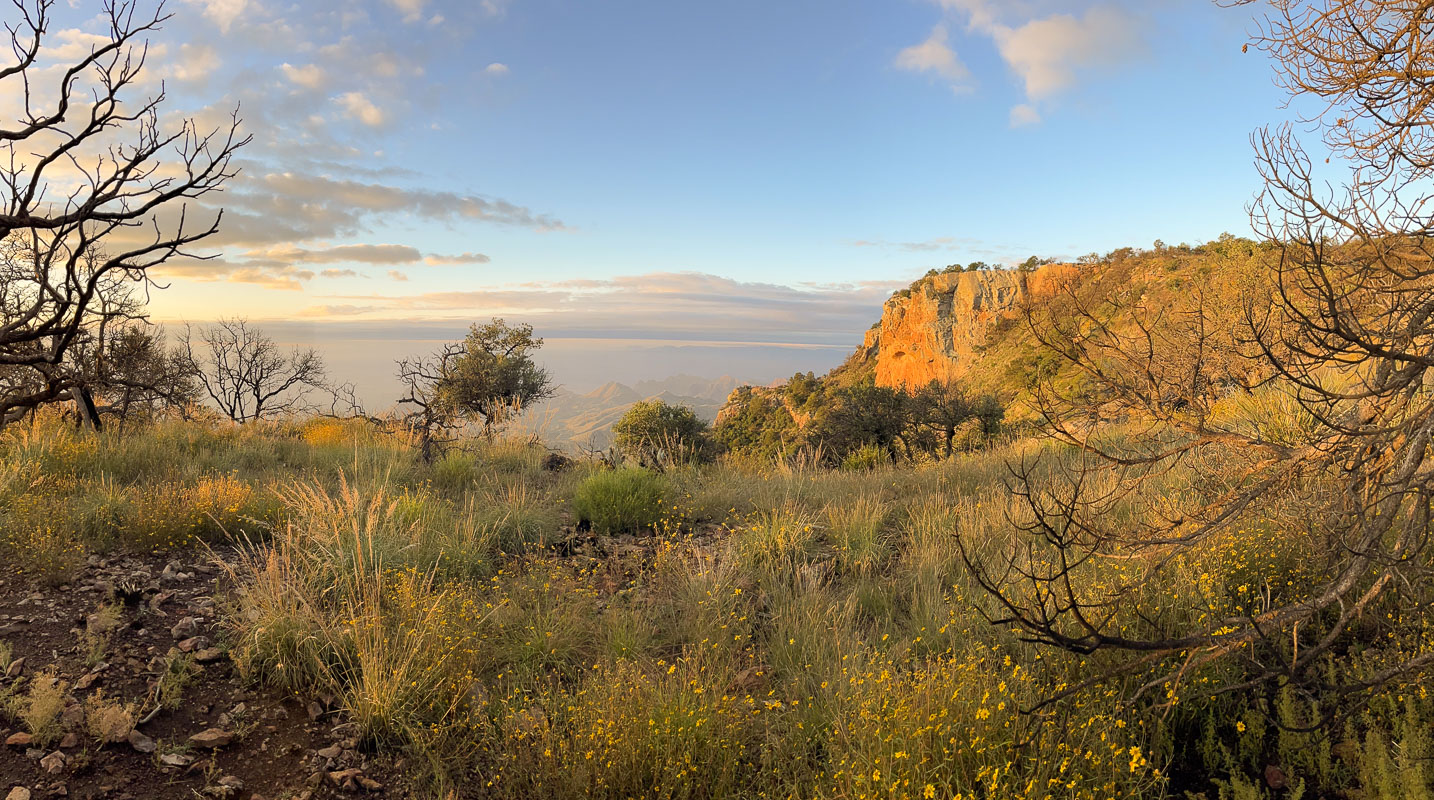
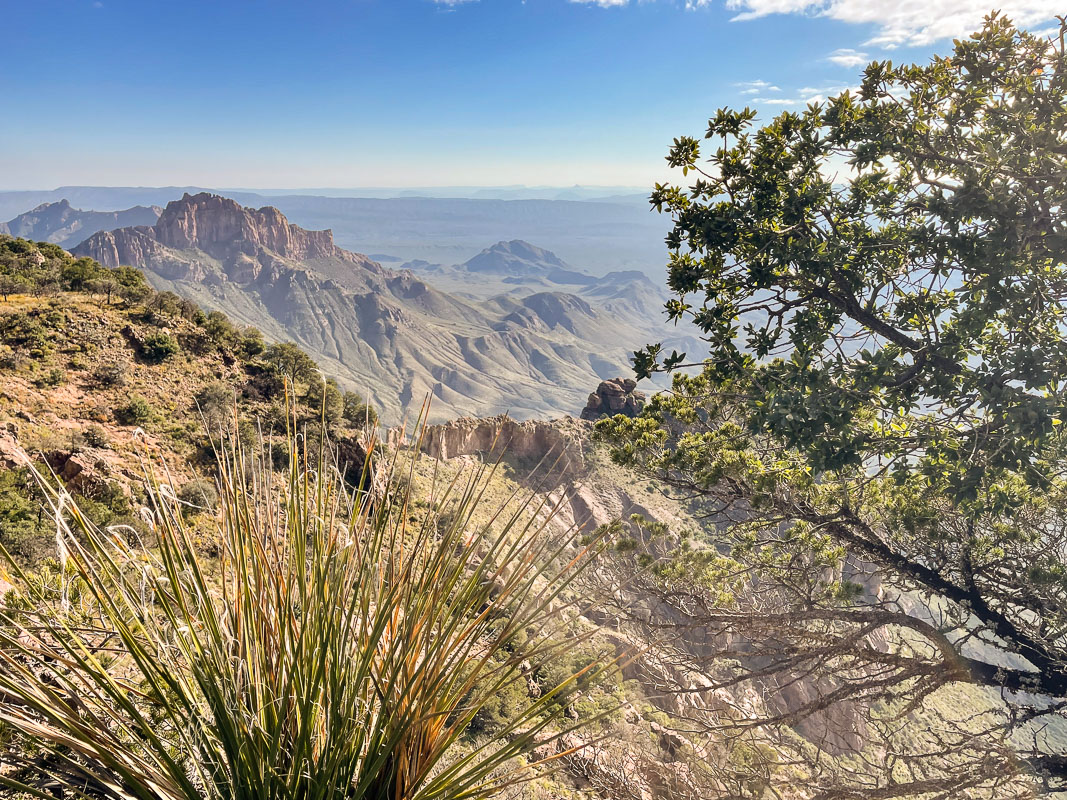
I shed my boots and headed over to my primitive camping spot for the next two nights, Paint Gap #41. PG4 has been one of my favorite car camping spots for a while; it’s got a great view, it’s semi-secluded and not many folks take the very rough road past PG. I set up my tent (sans fly-the weather had turned Big Bend perfect) and my tarp. I didn’t do much else, just relaxed and enjoyed the post-hike feeling and watched the dusk arrive. (Well, I did a few things: I set up a little camp light comparison, and before turning in I took a couple of photos of the Milky Way.)
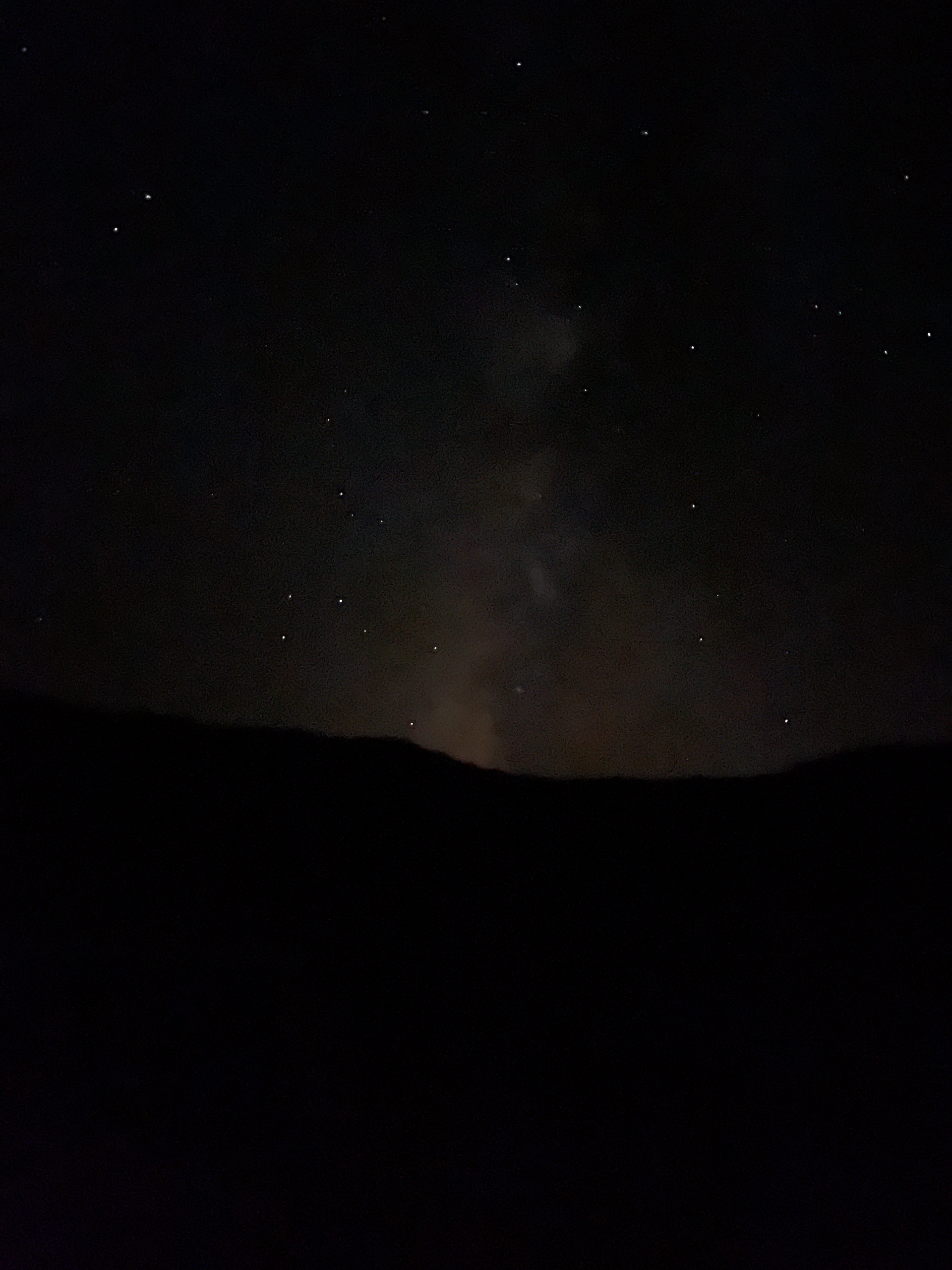
The next day I moseyed around the ranch site and corral area down by the alleged spring (I’ve never actually seen it). Everything was quite green, for the desert floor that is. The ocotillo were all dark green and many had red blooms, the way ocotillo do after rains. The unpaved road ends in a loop at the old corral remnants. You can see the hint of the old road continue on, and I followed that all the way until it seemed to finally peter out to the north. As always I spotted signs of the old ranching life here and there, and spent some time trying to photograph the desert blooms with my iPhone, but not too successfully. Some day I’m going to take my pack and camp out there somewhere, just because.

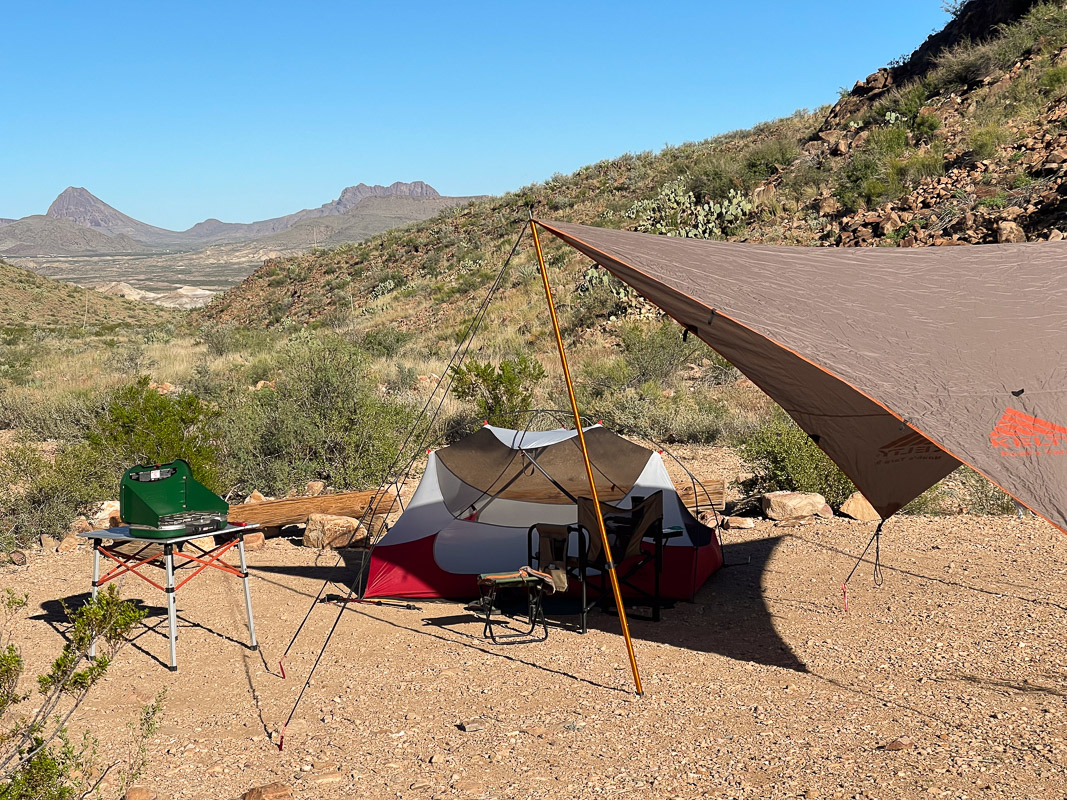
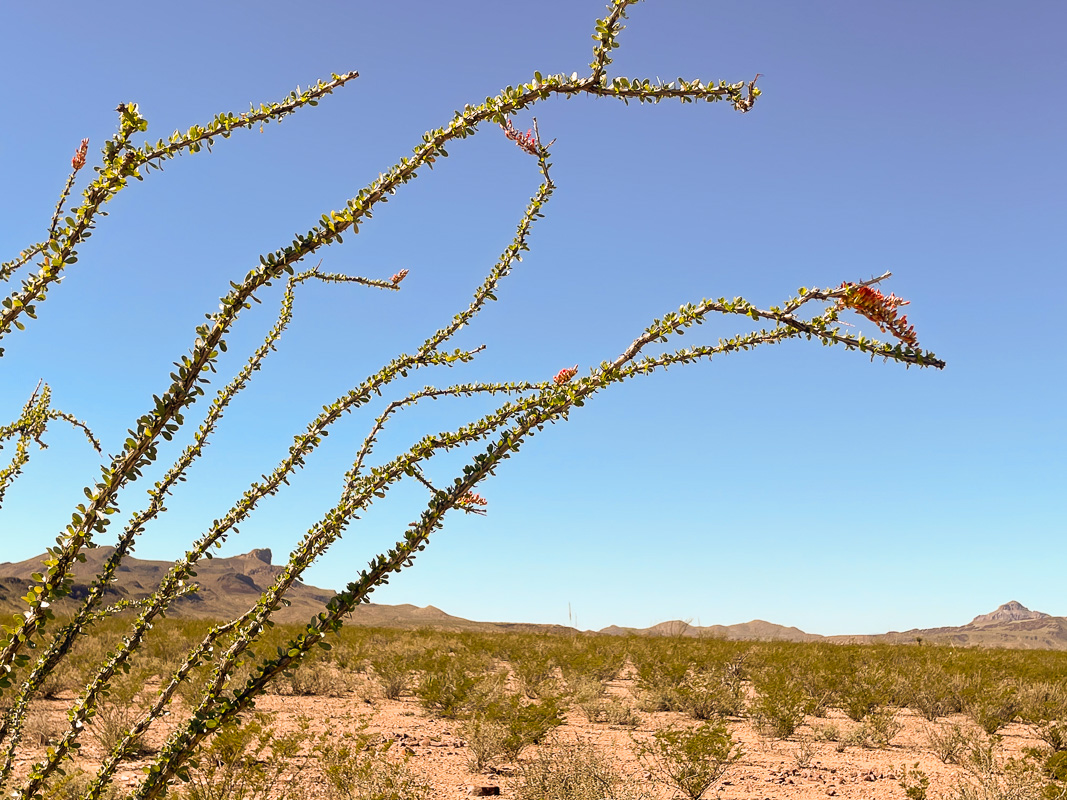
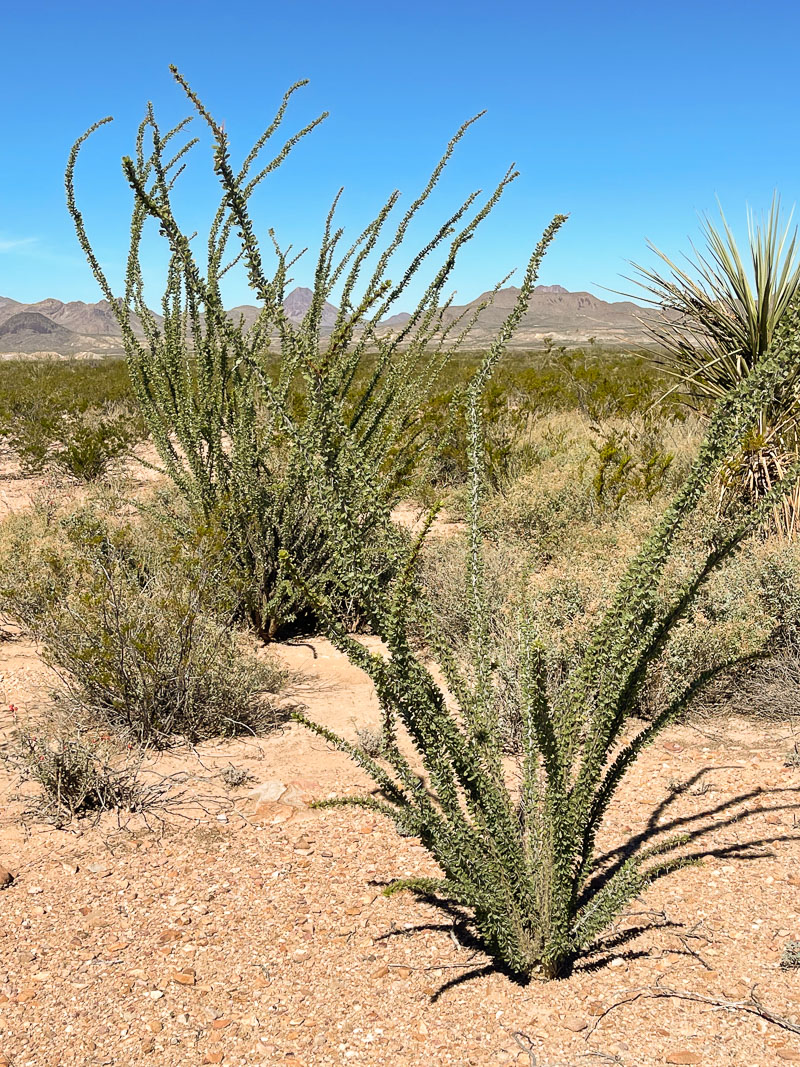
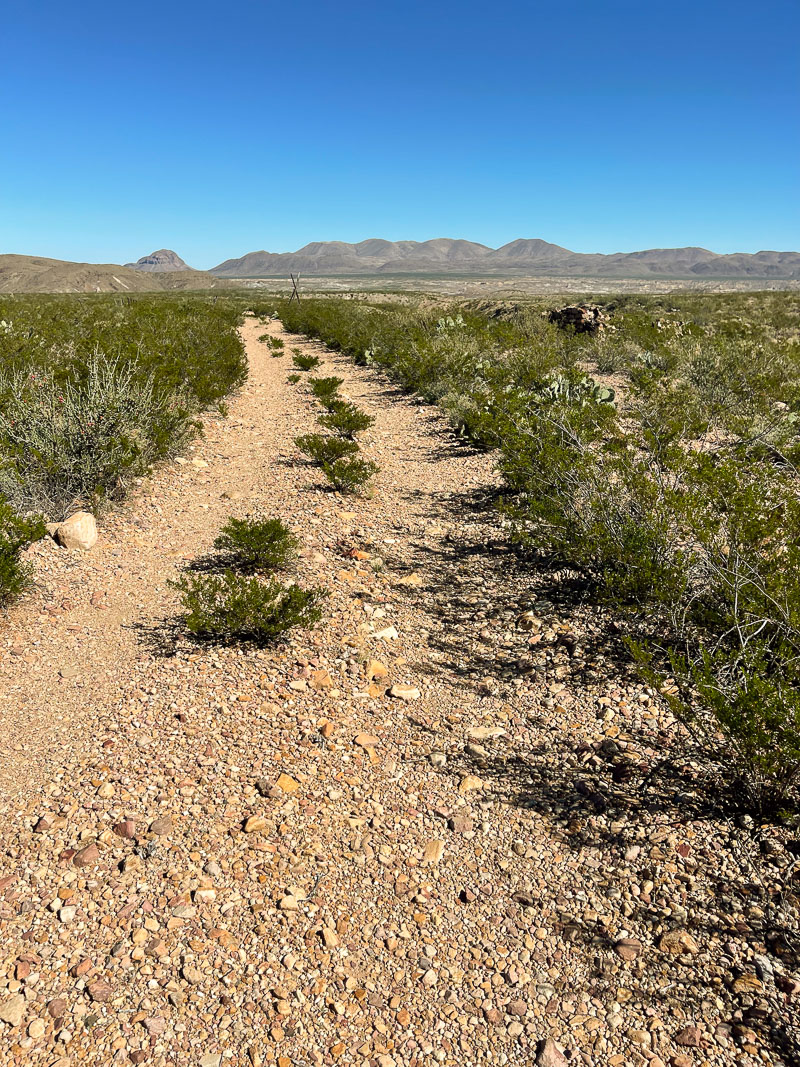
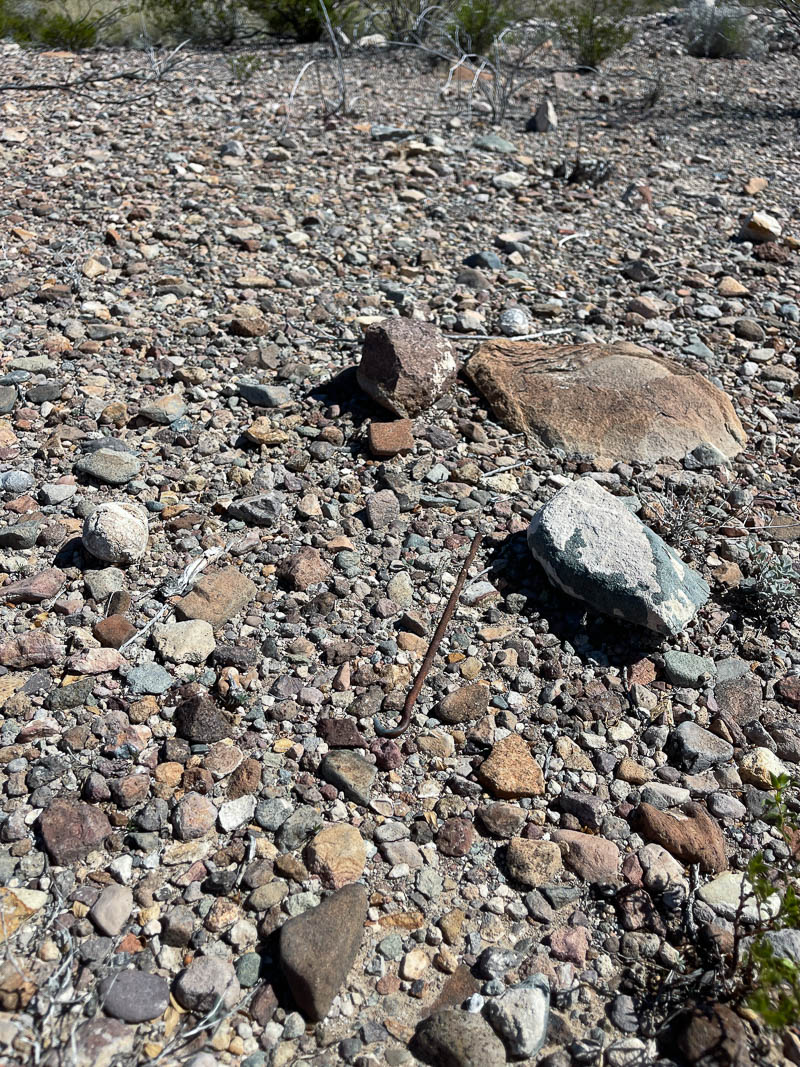
I returned home to Austin the next day, another successful trip!
Gear:
- Gregory Whitney pack
- Keen Circadia Mid Waterproof Hiking Boots (size 13)
- Tent Camping: Hubba Hubba NX (2019) tent
- Backpack shelter: Outdoor Research Helium Bivy
- Patagonia Capilene top
- Patagonia Rain Jacket
- Garmin inReach Mini
Lessons learned:
- Nothing maybe? Don’t forget to charge your inReach device!
- I’m using the NPS designations in effect at the time. In 2024 they removed old PG3 and now (as of May 2025) what was Paint Gap #4 is now Paint Gap #3. Confused? ↩︎
Discover more from Phil's Phieldnotes
Subscribe to get the latest posts sent to your email.
